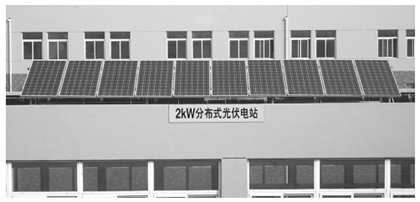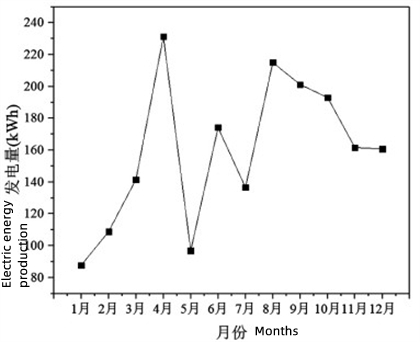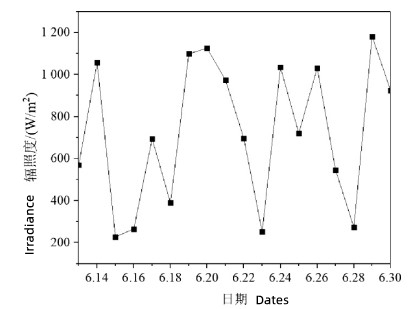In recent years, photovoltaic power generation has developed rapidly and has become an important part of new energy power generation. With the implementation of the "carbon peak" and "carbon neutral" plans, it is expected that photovoltaic power plants will usher in a new construction peak. The working performance of photovoltaic power plants is mainly affected by meteorological conditions such as light intensity and temperatures. Therefore, the working status of photovoltaic power plants will be significantly different in different months of the year, different days in one month, and different time of the day. Accurately analyzing the operating parameters of photovoltaic power plants under different conditions and periods is of great significance for the design, operation and maintenance of photovoltaic power plants, as well as the prediction of power generation. Different from traditional thermal power generation and hydropower generation, the power output of photovoltaic power generation has obvious characteristics of being intermittent and fluctuating, which will affect the working stability of electrical equipment. The conclusions and suggestions of the research will provide a reference for the design, site selection, operation and maintenance of photovoltaic power plants.

Figure 1 The 2kW distributed photovoltaic power station
As shown in Figure 1, the 2kW distributed photovoltaic demonstration power station is taken as the research object. The power station consists of 10 photovoltaic modules connected in series. The open-circuit voltage of a single photovoltaic module is 45.21V, the short-circuit current 5.72A, and the maximum power 200W.
2. Results and analyses
2.1 Power generation
By monitoring the operation data of the 2kW photovoltaic monocrystalline silicon power station for a whole year, the power generation each time each day was calculated, and the total power generation per month was obtained to obtain the operation trend of the power station for one year, as shown in Figure 2. It can be seen from the figure that the electric energy production fluctuated significantly in each month of the year. This was because Nantong has a subtropical monsoon climate and is affected by the oceanic climate; the four seasons are distinct, resulting in the operation of photovoltaic power plants showing seasonal changes. From January to April, the meteorological conditions gradually improve; the light intensity increase, and the temperature rise, so that the power generation of photovoltaic power plants shows an obvious monthly growth trend from January to April. From August to December, the weather conditions gradually deteriorate. Therefore, the power generation of photovoltaic power plants shows a clear downward trend month by month from August to December.

Figure 2 Electric energy production in different months of the year
However, the electric energy production in May and July dropped significantly. On the one hand, this was caused by the shutdown of the power station to protect the power station during thunderstorms. On the other hand, the maintenance after the shutdown was carried out due to the failure of the power station. In fact, the power plant was only operating for 16 days in May and 28 days in July. In June, there was no shutdown of the power station for maintenance, and it was summer. Theoretically, the climatic conditions were better, especially the irradiance of the sun was better, but the actual power generation was lower. This is related to the characteristics of the Nantong area. In June, the rainfall in the Nantong area is relatively much, and the lighting conditions are not good. As shown in Figure 3, it is the daily maximum solar irradiance distribution in June monitored by the automatic weather station of Nantong University of Technology. Some data are lost due to the failures of sensors. Only data of the irradiance from June 13 to June 30 was obtained, but it can still give you some information.
It can be seen from the figure that the daily solar irradiance fluctuates, and the variation range is great. In these 18 days, the maximum value of solar irradiance exceeded 1000 W/m2 for only 6 days, and the maximum value for irradiance was lower than 600W/m2 for 7 days, which led to the actual effective working days of the photovoltaic power station. Therefore, electric energy production in June was relatively low.

Figure 3 Daily maximum solar irradiance in June